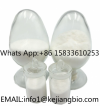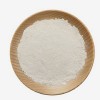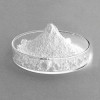





chemical
BDPC (systematic name 4-(4-bromophenyl)-4-(dimethylamino)-1-(2-phenylethyl)cyclohexanol; also known as bromadol) is a potent narcotic analgesic with a distinctive arylcyclohexylamine chemical structure. It was developed by Daniel Lednicer at Upjohn in the 1970s. Initial studies estimated that it was around 10,000 times the strength of morphine in animal models. However, later studies using more modern techniques assigned a value of 504 times the potency of morphine for the more active trans-isomer. This drug was first seized along with three kilograms of acetylfentanyl in an April 25, 2013 police action in Montreal, Canada, and has reportedly continued to be available on the designer drug black market internationally. Analogues where the para-bromine is replaced by chlorine or a methyl group retain similar activity, as does the meta-hydroxyl derivative.
Bromadol is an analytical reference material categorized as an opioid. This product is intended for research and forensic applications.
Bromadol, also referred to as BDPC (trans-4-(p-bromophenyl)-4-(dimethylamino)-1- phenethylcyclohexanol), was amongst the most potent and efficacious compounds studied here. Using a standard mouse hot plate assay, Liu et al. (2003) previously suggested that the analgesic potency of bromadol may be around 2.9 times that of fentanyl (Sharma et al. 2019). The herein reported in vitro potencies for βarr2 and mini-Gi recruitment echo this, as the EC50 values for bromadol were 7.6- and 10.8-fold lower than those obtained for fentanyl using the same respective assays. However, as discussed further, it remains difficult to directly compare in vivo analgesic potency to in vitro potency values. Interestingly, the in vivo antinociceptive potency reported by Liu et al. (2003) was greater than what may be expected based on opioid receptor binding affinity data (Sharma et al. 2019). Although determination of binding affinity was outside the scope of the current study, the high in vitro efficacy and potency at MOR reported here, may provide an explanation for this.